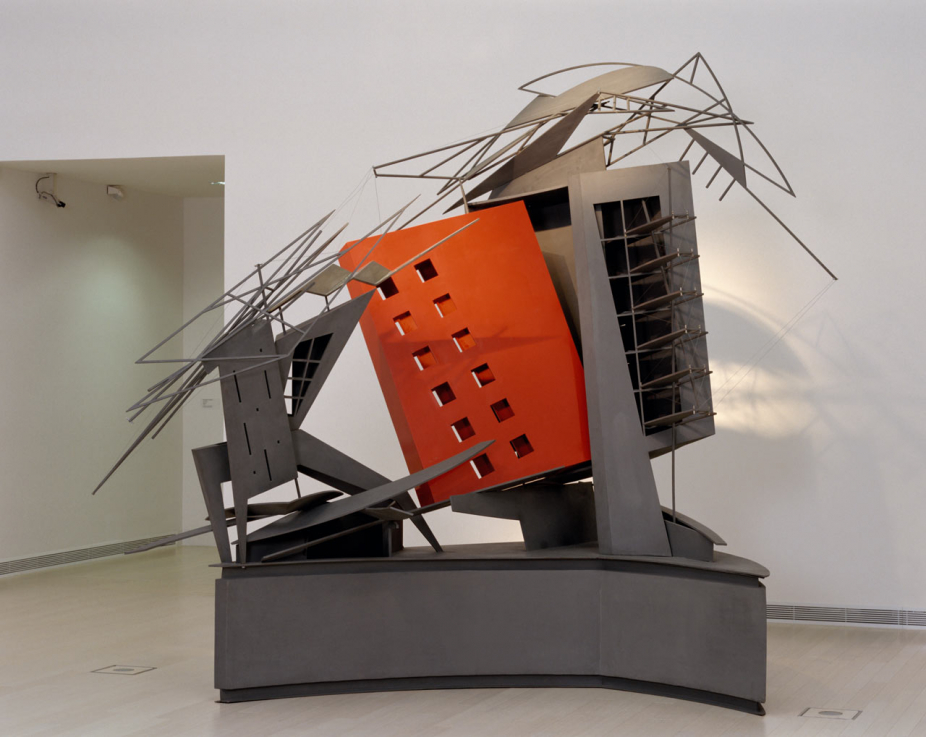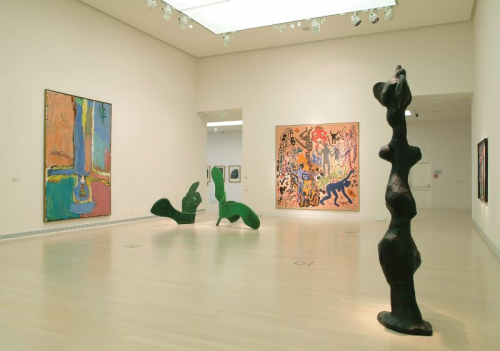Gábor Bachman, architect and interior designer, joined the Hungarian underground art scene in the late seventies as a scenic designer for Gábor Bódy’s films. In his film works, he created complex visual and acoustic environments where architecture, fine arts, design and music were combined, in line with Bódy’s experimental and ambitious vision. Bachman designed the pub Munka-Tett (Labour-Action) in Szigetszentmiklós in 1986, which in both its name and its form evoked the Russian revolutionary avant-garde and the constructivism of Lajos Kassák (a similar style was used for the façade and interiors of the NA-NE Gallery in Lónyay Street in Budapest in 1990). In the era of late socialism, the original architectural and artistic forms could only appear in fragments, devalued or ironic, in line with the postmodern and deconstructivist aspirations of the time, as was the case with leftist ideas. The Model of the Museum of Contemporary Art was created for the 1996 Venice Architecture Biennale, where Bachman once again created a gesamtkunstwerk in the Hungarian pavilion entitled The Architecture of Nothing, which included not only the provisional building he designed, as well as architectural structures and paintings, but also works of art, literature, music and film. The model for the museum of contemporary art is a crossover object that is at once a model, a building, a sculpture and a set piece, and that embodies Bachman’s artistic references (past) and his architectural pursuits (future).
Krisztina Szipőcs

